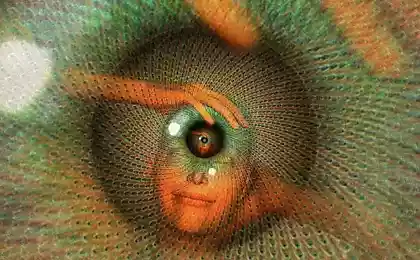430
Psychological self-diagnosis as a new type of prayer and search for oneself

Visualization of the process of psychological self-diagnosis as a spiritual practice
Internal dialogue in the era of information oversaturation
In the modern world, where information noise reaches incredible proportions, a person increasingly loses touch with himself. Every day we process gigabytes of data, but paradoxically ignore the signals of our own psyche. Ancient practices of self-discovery – prayer, meditation, Zen – have helped people find harmony with the inner world for centuries. Today, they are replaced by psychological self-diagnostics – a conscious practice that combines a scientific approach with deep self-investigation.
Psychological self-diagnosis is not just a tribute to the fashion for awareness or another trend in the field of self-development. This is a systematic approach to the study of one’s own inner space, based on modern knowledge of the human psyche and ancient practices of contemplation. In contrast to the classical diagnostics conducted by a specialist, self-diagnostics becomes a personal ritual, a kind of “prayer” of a modern person – an appeal to the depths of one’s own consciousness.
From prayer to structured reflection: the evolution of self-knowledge
Historically, humanity has always sought self-knowledge. In religious traditions, prayer served not only as a way of communicating with higher powers, but also as a way of deep inner work. Buddhist mindfulness and meditation practices focused on observing thoughts and emotions. Ancient philosophers called for the knowledge of themselves as the highest form of wisdom.
Modern psychological self-diagnosis has become a logical development of these traditions in a scientific context. It combines a structured approach with a deep immersion in its own inner world, but at the same time uses the accumulated knowledge of humanity about the psyche and its functioning.
“Know thyself, and thou shalt know the universe and the gods” – this ancient Greek wisdom, which adorned the temple of Apollo at Delphi, today finds a new embodiment in the practices of psychological self-diagnosis.
Why self-diagnosis becomes a new spiritual practice
In a post-industrial society, traditional religious institutions lose their monopoly on spiritual practices. Modern man seeks meaning and depth in everyday life, seeks authenticity and self-realization. Psychological self-diagnostics responds to these demands by offering several key elements that bring it closer to spiritual practices:
- Regularity and rituality systematic allocation of time to work with yourself;
- Depth and transcendence - going beyond the superficial perception of themselves;
- Transformational potential Possibility of profound personal changes;
- Holistic perception integration of various aspects of the personality;
- Creative character The aim is to harmonize the inner world.

Comparison of traditional and modern self-knowledge practices
Science or Spirituality: A False Dichotomy
The opposition of scientific and spiritual approaches to self-knowledge is increasingly recognized as artificial. Studies by neuroscientists confirm that spiritual practices, including prayer and meditation, activate the same areas of the brain as deep psychological work. Psychological self-diagnosis bridges these approaches, offering structured yet deeply personal experiences.
Current research on neuroplasticity shows that regular self-observation and reflection practices literally rebuild neural connections in the brain, forming new patterns of thinking and emotional response. This is a scientific confirmation of what the ancient mystics called the “transformation of the soul.”
Practical tools: how to start self-diagnosis
Psychological self-diagnosis is available to everyone and does not require special education or training. The main thing is a systematic approach and a sincere desire to know yourself more deeply. Here is a set of effective tools to start your practice:
- Regular maintenance of a reflective diary with a focus on emotional states, their triggers and consequences. A daily recording of even 5-10 minutes creates an astounding map of your interior landscape in a matter of months.
- Meditative body scanning The practice of consistently directing attention to different parts of the body, observing the sensations and emotions that arise. The body often stores information inaccessible to consciousness.
- Observer technique Developing the skill of detached observation of one’s own thoughts and emotions without identifying with them. This practice allows you to see automatic response patterns.
- Dialogue with the inner parts of the personality A technique that allows you to identify and explore different subpersonalities, their needs and conflicts. Written dialogue with the "inner critic", "inner child" opens access to the deep layers of the psyche.
- Working with psychological questionnaires Using science-based tools to evaluate various aspects of personality, emotional intelligence, and cognitive styles.
Transformational Potential: From Awareness to Change
The true value of psychological self-diagnosis is revealed in its transformational potential. Awareness of one’s own patterns, responses, and underlying attitudes opens up space for conscious choice and change. Just as prayer in religious traditions leads to purification and transformation, self-diagnosis creates an opportunity for a profound transformation of the personality.

Symbolic depiction of a transformational journey through self-knowledge
Dangers and limitations of self-diagnosis
For all the benefits of psychological self-diagnosis, it is important to be aware of its limitations. Working independently requires sincerity and courage to face the shadowy aspects of the individual. There is a risk of self-deception, distorted interpretation, or excessive fixation on negative aspects. In case of detection of serious psychological problems, specialist consultation is necessary.
Self-diagnosis is a process, not an end point. Just as prayer practice in spiritual traditions is a continuous path rather than a single action, working with oneself requires patience, consistency, and inner honesty. It is important to accept what is discovered with self-compassion, without falling into self-criticism or self-blame.
Integration into everyday life: from practice to lifestyle
The highest form of psychological self-diagnosis is its transformation from a separate practice into a skill integrated into everyday life. Conscious living of each day, attentiveness to your own reactions and states, the ability to reflect at the moment of the emergence of emotions are all signs of mature practice of self-knowledge.
When self-diagnosis becomes a way of life, the line between the ordinary and the sacred blurs. Every moment is an opportunity to deepen your understanding of yourself, and every interaction with the world is a mirror that reflects the facets of your personality. This is the deep resemblance of psychological self-diagnostics with mystical traditions that strive for sacredness in everyday life.
Conclusion: The New Sacrality in the Secular World
Psychological self-diagnosis is becoming a new form of sacred practice in the post-secular world. It satisfies a deep human need for self-knowledge by offering modern language and tools for this ancient endeavor. By combining the rational and the intuitive, the scientific and the spiritual, it opens the way to authenticity and inner harmony.
In a world saturated with external information and incentives, turning inward becomes a revolutionary act. Psychological self-diagnostics offers not only a method of improving the quality of life, but also a way of profound transformation of the personality, comparable to what spiritual practices traditionally offer. In this sense, it really becomes the prayer of modern man – an appeal to the very essence of his being in search of meaning and integrity.
Glossary of terms
Psychological self-diagnosis
Systematic practice of studying one’s own psychological characteristics, emotional states and behavioral patterns using scientifically based methods.
reflection
The process of self-knowledge by the subject of internal mental acts and states, comprehension and analysis of his own experience.
Mindfulness (mindfulness)
A state of consciousness characterized by concentration on the current moment, an unevaluated perception of one’s own thoughts, feelings and bodily sensations.
Neuroplasticity
The ability of the nervous system to change its structure and function in response to internal and external influences is the basis for learning and forming new psychological patterns.
Subpersonality
In psychology, relatively autonomous parts of the personality have their own needs, values, and response patterns.
Transcendence
Extending the limits of ordinary experience and perception associated with experiencing the deep aspects of being.
Self-regulation
The ability of the individual to manage his psychological and physiological states, to modify his own behavior according to the requirements of the situation.
Ideal rest in the fresh air: how to organize a comfortable space in the country
4 reasons to try writing with your left hand if you are right-handed, and vice versa























